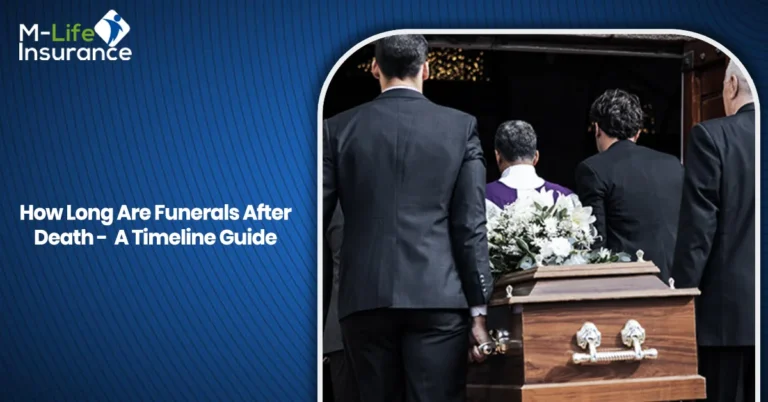Last Updated on: May 23rd, 2025
- Licensed Agent
- - @M-LifeInsurance
You have all the rights to enjoy every moment of your life, but you also have to be aware that accidents can also happen at any time that will make your family suffer. Start thinking about what would happen to them if something happened to you? These questions often come up in your mind reminding us how important it is to plan ahead and protect the people we care about most.
And wondering how to secure your family’s future, there is only one way to protect your loved ones that is life insurance. Life insurance is an important part of planning your finances. But many of the people ask, “Can I have more than one life insurance policy?” The good news is, you can! Sometimes having multiple policies can even be a smart choice.
Table of Contents
ToggleBelow we’ll get all the information regarding the legality, benefits, risks, and strategies you have while holding multiple life insurance policies, including term life insurance policies. We will also answer common FAQs like how many life insurance policies can a person have?Let’s get started.
Basics of Life Insurance
Before getting the details of the topic of multiple policies, let’s quickly review the types of life insurance available:
- Term Life Insurance
This term life insurance Covers a specific period (e.g., 10, 20, or 30 years) and pays out if the policyholder dies within that time period.
- Whole Life Insurance
The whole life insurance covers your entire life giving lifetime coverage with a savings or investment component and you can also use it while you are still alive.
- Universal Life Insurance
Universal life insurance is the flexible insurance where you can get an adjustment for your payments of how much the amount your loved ones would receive when you’re gone.
Stacking Life Insurance Policies: Is It Legal and Beneficial?
Yes , you can have more than one life insurance policy and this is completely legal and also this is very common especially for those people having big financial responsibilities or long-term plans.
Some common reasons to have multiple policies include:
- To cover different financial needs (e.g., mortgage, education, business loans).
- To set up term policies that end around major life milestones
- To add extra coverage on top of what their job provides.
- To adjust for changes in income, lifestyle, or family size.
So, not only can you have multiple life insurance policies, but it is also a smart way to build flexible financial safety for your loved ones.
Having Two Life Insurance Policies
Yes you heard it right there is no law that restricts you from having two life insurance policies. Insurance companies do not restrict their clients from applying for coverage from multiple providers, as long as you’re honest about your existing taken insurance policy.
However, all insurance companies will ask if you have any other active life insurance and then they use a process called underwriting to make sure that the total amount of life insurance you’re applying for makes any sense based on your income and overall financial situation.
So, while it’s legal, it must be justified and fully disclosed.
Multiple Term Life Insurance Policies
Yes, you can have multiple term life insurance policies and many people do! It’s a smart way to make sure different financial needs are covered at different stages of life. For example:
- A 30-year policy to cover your mortgage.
- A 20-year policy to pay a child’s college tuition.
- A 10-year policy to handle short-term debts.
This is called laddering, and it can save money while making sure that your financial obligations are covered at the right time.
So, if you’re asking, “Can you have more than one term life insurance policy?”The answer is yes, with proper planning, it can be very effective.
How Much Does Life Isurance Cost?
Two Insurance Policies – Here’s What to Know
Yes you can have two insurance policies and not just for life insurance. It’s common in health, auto, home, and other insurance categories too. However, in each case, there are rules to avoid insurance fraud or duplicate claims.
For life insurance, having two or more policies is generally straightforward, simple and legal. For health or auto insurance, having more than one policy means the insurers work together to decide how to split the costs, this is called coordination of benefits.
So, can you have multiple insurance policies? Yes, but each type of insurance comes with its own guidelines and requirements.
2 Life Insurance Policies With the Same Company
Many insurance companies allow you to apply for extra policies if your needs change over time. But it’s a very good idea to compare the prices and benefits of the other companies because you may find better options, especially if your health or finances have improved.
Sometimes, getting a new policy from another insurer is smart because it spreads out your risk instead of putting it all with one company.
Why Would Someone Want Multiple Life Insurance Policies?
Here are some scenarios where having more than one life insurance policy makes financial sense:
1. Layering Coverage for Changing Needs
You may want $1 million of coverage when your kids are young, but not when they’re grown. By layering term policies, you can scale down coverage over time while saving on premiums.
2. Separate Coverage for Business and Personal Needs
If you own a business, you might buy a key person policy or a buy-sell agreement policy in addition to your personal life insurance.
3. Supplementing Group Life Insurance
Employer-provided policies are often not enough and typically expire if you leave your job. An individual policy offers long-term protection.
4. Divorce and Child Support Requirements
Sometimes divorce agreements can require any one of the parents to maintain life insurance as part of child support for the future.this will ensure that the child’s financial needs are still fullfilled, even if something happens to that parent.
How Many Life Insurance Policies Can a Person Have?
There’s no set legal limit to how many life insurance policies you can own. What matters is your insurability, which is based on:
- Your income (usually 10-20x your annual income is allowed in total coverage).
- Your existing coverage.
- Your health status.
- Your financial obligations.
So, if it’s 2, 3, or even more than 3 policies, the important thing is that a person has to show that the total amount of coverage makes sense and it is justified.
Is It Worth Having More Than One Life Insurance Policy?
In many cases, yes. Having multiple policies can:
- Allow for customized coverage based on your financial plan.
- Offer cost savings through shorter terms or smaller coverage amounts.
- Give you flexibility to cancel or reduce policies as your needs change.
However, managing multiple policies can be complex. You’ll need to:
- Keep track of premiums and due dates.
- Ensure beneficiaries are updated.
- Inform your family or estate planner of all active policies.
If you’re organized and financially savvy, it can be a powerful strategy.
Double Coverage: Primary and Secondary Health Insurance
Health insurance works a bit different from life insurance. Yes, you can have more than one health insurance policy, specially in cases when:
- When you are covered by both your job and your spouse’s job.
- When you qualify for Medicare but also have a private plan.
- When you have a supplemental health policy alongside your main health insurance
But keep in mind, the coordination of benefits rule applies here. That means one insurer acts as the primary payer, and the other is secondary. This can limit how much you get reimbursed and this will prevent you from getting paid twice for the same expense.
How many life insurance policies can be taken out on one person?
This is a delicate issue. Technically, multiple people can take out policies on one individual, but they must have an insurable interest. A legitimate financial or emotional reason to suffer loss if the person dies.
For example:
- A spouse, child, or parent can insure a family member.
- A business partner can insure a co-owner.
- A lender can require insurance on a borrower.
But you can’t just buy a policy on a stranger or a casual acquaintance. Consent and proof of insurable interest are mandatory.
Risks of Having Multiple Life Insurance Policies
While there are many benefits of having multiple life insurance, there are also a few downsides and risks that you have to keep in mind:
1. Overlapping Coverage
You might pay for more insurance than you need if you’re not carefully planning how the policies work together.
2. Higher Premiums
Managing several policies may result in higher administrative costs, especially if you’re paying separate policy fees.
3. Missed Payments
More policies mean more payment dates. Missing premiums could result in policy lapses or loss of coverage.
4. Underwriting Scrutiny
Applying for multiple policies simultaneously can trigger red flags with insurers, leading to closer underwriting scrutiny.
Tips for Managing Multiple Life Insurance Policies
If you decide to go this route, here’s how to manage your policies effectively:
- Always work with a licensed advisor or insurance agent
- Keep a detailed file with policy numbers, beneficiaries, and contact information.
- Set reminders for premium payments so nothing gets missed.
- Periodically review your coverage to ensure it aligns with your current needs.
- Always disclose existing coverage when applying for new insurance.
Conclusion
So, can you have more than one life insurance policy? The answer is yes, you can have more than one life insurance policies, even multiple term life insurance policies, and sometimes even with the same company.
The important thing is to make sure that this matters a lot. Your coverage makes sense for your life. It must have to follow the rules, stay within your budget, and meet your financial needs.The best way to get it right is to talk with a licensed insurance expert. They will help you find the coverage that protects your loved ones without costing more than necessary or making things confusing.
Talk to M-life insurance a licensed insurance professional today to find the right life insurance plan for your needs. Don’t wait, secure your family’s future now!
Frequently Asked Questions (FAQs)
How many life insurance policies can a person have?
There’s no legal limit, but total coverage must be justified by your income and financial obligations.
Is it okay to have two insurance policies?
Yes, and it’s common. Just be aware of premium costs and ensure all policies are necessary.
Is it worth having more than one life insurance?
Yes, especially if you need different coverage amounts for different time periods or obligations.
Can you have 2 life insurance policies with the same company?
Yes, many insurers allow multiple policies, but compare rates with other providers too.
Can you have more than one health insurance policy?
Yes, but insurers will coordinate benefits to prevent duplicate reimbursements.
How many insurance policies can you have on someone?
As many as needed, if each policyholder has a valid insurable interest and the person being insured agrees to it.

Joyce Espinoza, Expert Life Insurance Agent
Joyce Espinoza is a trusted life insurance agent at mLifeInsurance.com. She’s been in the insurance industry for over ten years, helping people, especially those with special health conditions to find the right coverage. At MLife Insurance, Joyce writes easy-to-understand articles that help readers make smart choices about life insurance. Previously, she worked directly with clients at Mlife Insurance, advising nearly 3,000 of them on life insurance options.




